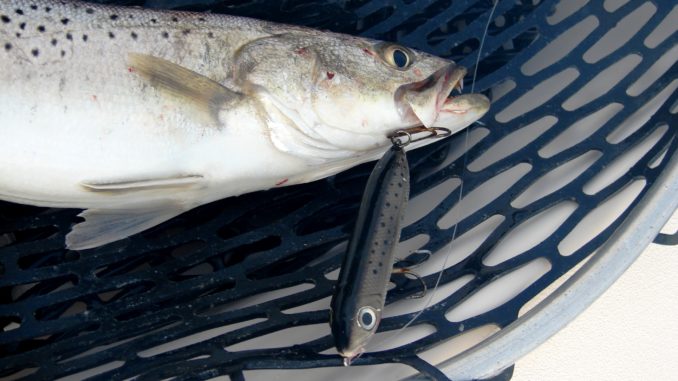
Fish topwaters early, hook up croakers later on for Croatan, Roanoke Sound speckled trout.
The sun was barely glowing over the horizon as Capt. Richard Andrews of Tar-Pam Guide Service headed out one June morning, looking to get an early start on speckled trout in the Roanoke and Croatan sounds around Manteo.
“I’m pleasantly surprised to see the wind so still this morning,” Andrews said. “We’re going to go see if the trout will get fired up about some topwaters. With the wind calm, they should be able to home in on every twitch.”
Passing under the Washington Baum Bridge between Manteo and Nags Head, Andrews said he’d return and fish the span later in the day. Running up the sound and towards Nags Head, he slowed, eased up a good hundred yards from the spot he wanted to fish and lowered his trolling motor.
“We’re going to throw topwater lures … Rapala Skitterwalks or MirrOlure She Pups,” Andrews said. “Those lures walk the dog easily and have rattles that call fish. The water is really calm, so walk the lures slowly and even pause occasionally. We’re in a big area, with little bits of structure and patchy grass all around the boat, so cast in every direction. The lure will rattle and splash in the water and if hungry fish are here, they’ll find them.
“Trout sometimes strike at topwater lures and miss,” Andrews said. “They often strike just as you turn the lure and can’t grab it. It’s hard to do at first, especially when you see the trout strike at the lure, but you have to wait until you feel the trout hit the lure to be able to set the hook. Exercise a little patience and you’ll catch a lot more fish.”
Vaughan Robinson was slowly twitching a Skitterwalk across the glassy water when it suddenly disappeared. He set the hook, and his rod tip bent deeply. The fish rushed out to the side and came to the surface shaking its head so hard you could hear the lure rattle. After a minute or two, the speck calmed down, and Robinson led it to Andrews and his waiting net.
Several casts later, the scene was repeated, except that Andrews was battling the fish. His strike came after he twitched his lure a couple of times and let it sit until the rings on the water had spread about six feet. A trout hammered it when he twitched it again.
The topwater action was good, but it slowed as the sun climbed higher in the sky, and Andrews eased out to the channel, studied his fish finder closely, then passed out rods with Sabiki rigs tied on when he passed over a blob of baitfish.
“Drop these Sabiki rigs to the bottom and jig them about a foot,” Andrews said. “You’ll feel bait hitting them, and if you pay attention, you can tell when you have a little or a lot on the rig. When you have a lot, reel it up.”
The bait was a school of small croakers, and they were hungry. After three or four hits, a bunch of frisky live baits were milling around in Andrews’ baitwell as he headed back to Baum Bridge one of three big structures in the area along with the Virginia Dare Bridge and the Manns Harbor Bridge.
For fishing around bridges, Andrews uses rods rigged with Cajun Thunder rattling corks and Kahle-style, wide-bend hooks suspended several feet under them.
“We’re going to use these croakers as live bait,” Andrews said, slipping a hook just under the skin and through the back of one baitfish, just below the dorsal fin. “Hooking them like this allows them to swim freely.
“Trout could be anywhere around the bridge,” Andrews said. “Usually they are just inside the shadows, but sometimes they may be 20 feet or more out from the shadows. Sometimes they are right beside the pilings, and sometimes they are away from them. We’ll ease through here casting all around, and when we find them, we’ll stop and fish.”
Andrews cast under the bridge just inside the shadow line near a row of pilings, and Robinson cast deeper under the bridge, between the rows of pilings. The wind floated their corks out, and when a series of casts didn’t draw a strike, he started moving to different sets of pilings. After two moves, he struck paydirt. On Robinson’s first cast, his cork disappeared immediately. Moments later, Anderson scooped the trout up with the net, and Robinson was hooked up again before Andrews had released the first trout. Before the bite slowed, the spot produced another dozen keeper trout and two stripers who couldn’t resist the croakers.
Several other spots on the Baum bridge and the Manns Harbor Bridge produced trout, a few stripers and one red drum, and to try and complete the “Manteo slams” for his entire party, Andrews made a quick run into a small creek for a few more reds. Another couple of places failed to produce flounder to upgrade the “slams” into “super slams” before a nasty cloud began to build and Andrews started to work his way back to the marina.
Robinson was landing a trout a few minutes later when there was a flash of lightning followed by the sharp crack of thunder. Andrews was true to his word and headed to the marina, finishing up a trip that produced better than three-dozen trout, a half-dozen stripers and a half-dozen reds — all of which were released.
DESTINATION INFORMATION:
HOW TO GET THERE — Manteo is on Roanoke Island, almost at the eastern terminus of US 64, the main access from most of North Carolina to the northern Outer Banks. US 264 is a southern route that runs along the western edge of Pamlico Sound and rejoins US 64 at Manns Harbor, and US 158 is a northern route that parallels the Virginia border before crossing the sound and running down to Nags Head. A National Park Service ramp is at Oregon Inlet Fishing Center; two N.C. Wildlife Resources Commission ramps are on Roanoke Island, one next to the US 64/264 (Baum Bridge) and the other at the end of Bowsertown Road on the western side of the island. Another public ramp is on the mainland end of the Manns Harbor Bridge at US 64/264 Business. Community or county ramps are at Shallowbag Bay on the Manteo waterfront and on Broad and Mill creeks in Wanchese.
TACKLE/TECHNIQUES — Most fishermen use medium or medium-light, 6 1/2- to 7 1/2-foot spinning outfits. Trout have soft mouths, and soft rod tips and light drags help land more of them. Reels should be spooled with 8- to 15-pound braided line and a piece of low-visibility monofilament or fluorocarbon leader. Topwater baits are productive early in the day; live bait — such as small croakers — produce more fish later in the day, fished under a popping cork.
SPECK REGS — Speckled trout cannot be kept by commercial or recreational fishermen until June 15. When the season opens, the daily creel limit will be four fish per person, with a 14-inch size minimum.
GUIDES/FISHING INFO — Capt. Richard Andrews, Tar-Pam Guide Service, 252-945-9715, www.tarpamguide.com; Oregon Inlet Fishing Center, 252-441-6301, www.oregon-inlet.com; Manteo Marine, 252-473-2197, www.parkboat.com; Pirate’s Cove Marina, 800-367-4728, www.fishpiratescove.com. See also Guides and Charters in Classifieds.
ACCOMMODATIONS — Dare Haven Motel, Manteo, 252-473-2322, www.darehaven.com; Outer Banks Chamber of Commerce, 800-627-3150, www.outerbankschamber.com.
MAPS — Capt. Segull’s Nautical Charts, 888-473-4855, www.captainsegullcharts.com; Sealake Fishing Guides, 800-411-0185, www.thegoodspots.com; GMCO’s Chartbook of North Carolina, 888-420-6277, www.gmcomaps.com.

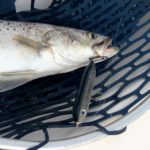
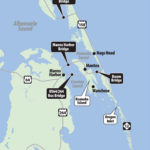
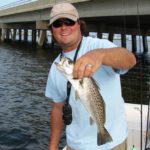
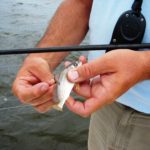



Be the first to comment